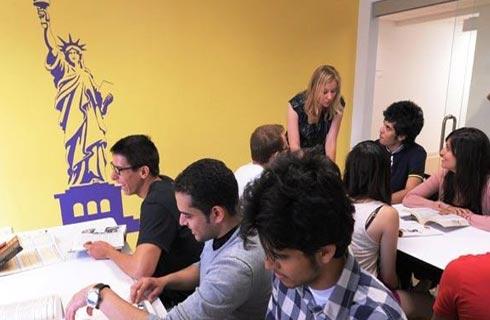健康科学学士学位-放射技术
Bachelor of Science in Health Science - Radiologic Technology

学历文凭
Bachelor Degree

专业院系
Health Science

开学时间

课程时长

课程学费

国际学生入学条件
First year students or freshman are those still in high school or have completed high school but have not attended college after high school.
IELTS - 6.5
TOEFL iBT - 80
Duolingo - 105
IDP—雅思考试联合主办方

雅思考试总分
6.5
- 雅思总分:6.5
- 托福网考总分:80
- 托福笔试总分:160
- 其他语言考试:PTE Academic - 53
CRICOS代码:
申请截止日期: 请与IDP联系 以获取详细信息。
课程简介
This concentration was developed to train students to meet the growing demand for technologists who image the body through the use of radiation equipment (X-ray technology). As a member of the radiological team, technologists capture images of bones, organs, and blood vessels as prescribed by physicians to assist in the diagnosis of diseases or injuries. After completion of this concentration, students continue on to the post-baccalaureate program in order to be eligible to take the national registry examination. Job opportunities may be found in hospitals, physicians offices, urgent care clinics, diagnostic laboratories and industry. The School of Health Technology and Management (SHTM) offers a Bachelor of Science degree in Health Science (BSHS), with clinical and non-clinical concentrations. Non-clinical concentrations of study include community health education, human development and disability studies, emergency and critical care, environmental health and safety, health care informatics, health care management, healthcare quality: coding and reimbursment, and public health. Clinical concentrations of study include anesthesia technology, medical dosimetry, nuclear medicine technology, and radiologic technology. The success of the health care system in this country is dependent upon qualified personnel. Access to care, quality of care, andcost of care are all affected by the availability of properly educated and trained workers. In formulating policies, plans, and programs, the health industry, policymakers, educators, and other stakeholders need timely data on the supply, demand, distribution, education, and use of the workers needed to deliver essential services. Therefore, SHTM, along with the Health Science major, continues to design, and offer majors to recruit and graduate students in areas of critical need, as identified by state agencies, professional associations, organized labor, and the business and industrial sectors of the state.
相关申请
 预科
预科 奖学金
奖学金 实习机会
实习机会 在校学习
在校学习 跨境学习
跨境学习 校园授课-线上开始
校园授课-线上开始 在线/远程学习
在线/远程学习
开学时间&学费
学费信息仅供参考,请与IDP联系以获取详细信息
| 开学时间 | 时长 | 学费 | 地点 |
|---|
学校排名

世界排名251
数据源:
泰晤士高等教育世界大学排名
关于纽约州立大学石溪分校

石溪大学(简称 SBU)成立于 1957 年,位于纽约州长岛,是一所充满活力的公立大学。该大学共有约 25000 名学生,其中包括 17000 多名本科生,支持着一个庞大而多元化的学术社区,同时提供丰富而令人兴奋的大学体验。该大学提供广泛的本科、研究生和博士课程,涵盖多个领域。该校在科学、工程和医学方面拥有坚实的基础,并辅以艺术、人文和社会科学课程。热门专业包括生物医学工程、海岸环境研究和计算机科学,每个专业都将学校的前沿研究与基于实践经验的学习相结合,为学生完成学业后从事专业工作做好准备。根据2024年《美国新闻与世界报道 》,SBU 在纽约州公立大学中排名第一,在全美公立大学中排名第 26 位。同一份研究报告还将该大学的社会流动性排在全美第 12 位,并跻身全美十大最多元化大学之列。SBU 是纽约州立大学(SUNY)系统的一部分,并于 2022 年被纽约州州长正式指定为纽约州立大学的两所旗舰大学之一。该大学的长岛校区为学生提供了一系列美丽的海滩,同时还拥有靠近纽约市的所有优势,为学生提供了丰富的教育和课外活动机会。
本校相关课程

妇女与性别研究文学士
学历文凭
Bachelor Degree
开学日期
课程费用总额


技术系统管理理学学士
学历文凭
Bachelor Degree
开学日期
课程费用总额


可持续发展研究文学学士学位
学历文凭
Bachelor Degree
开学日期
课程费用总额


西班牙语言文学学士学位
学历文凭
Bachelor Degree
开学日期
课程费用总额


社会学文学学士
学历文凭
Bachelor Degree
开学日期
课程费用总额


社会工作科学学士学位
学历文凭
Bachelor Degree
开学日期
课程费用总额

其他相关课程

生物力学与运动科学哲学博士
 特拉华大学
特拉华大学泰晤士高等教育世界大学排名:474
学历文凭
Ph.D.
开学日期
课程费用总额










